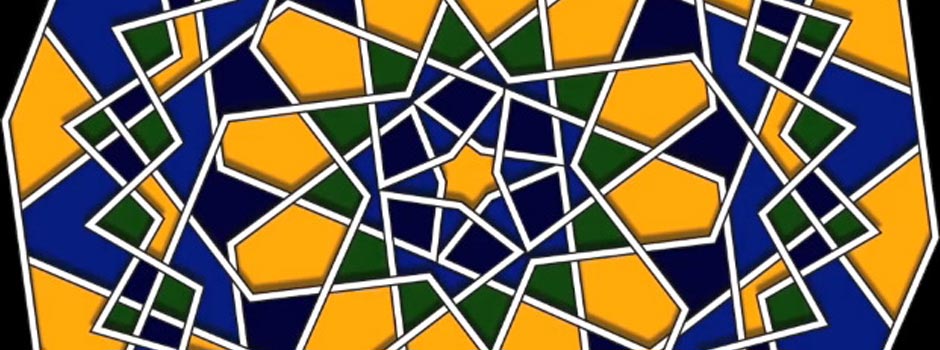
The gallery inaugurates the season with a solo show by the Tunisian artist ‘Paraître’ by Nicènce Kossentini at Sabrina Amrani Art Gallery
Oct 07, 2012 Exhibition

The exhibition opened with a series of works titled 'Shakl', which in Arabic means both “motion†and “shapeâ€. It is a series of glass panels on which it is written with ink the diacritics of ancient texts of Arabic philosophy that are projected onto a white cloth. The letters are not copied. Their absence empty the text of its body and its senses. Graphic signs drawn on the glass panels and their shadows floating behind, over the white canvas, can be perceived in this work as muted movements where rhythm is repeated until madness without finding the meeting point and the meaning.
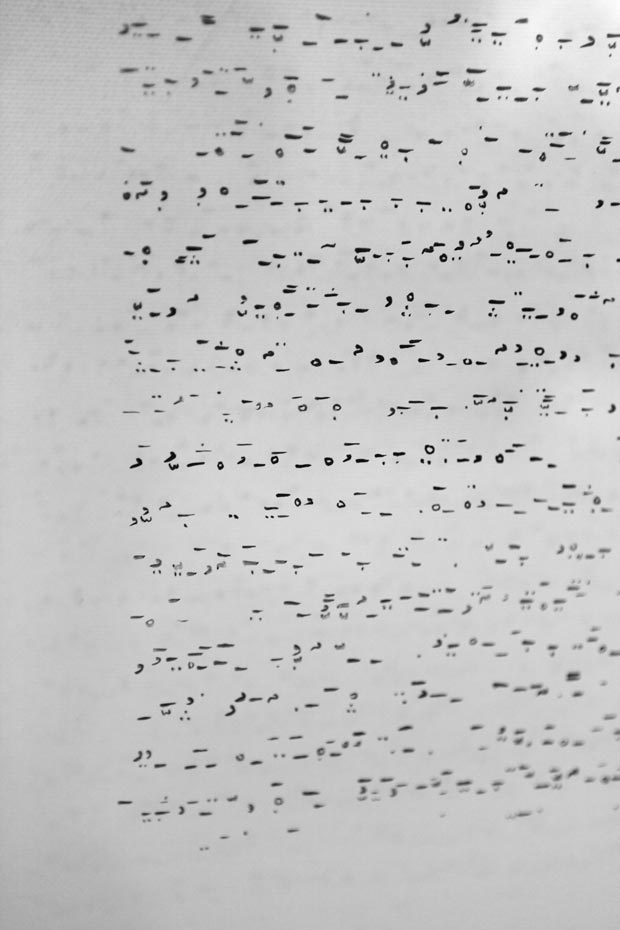 Detail of Shakl, 2012. Black ink, glass, white canvas. 73 x 130. Series of 10 unique pieces / Courtesy of Sabrina Amrani Art Gallery
Detail of Shakl, 2012. Black ink, glass, white canvas. 73 x 130. Series of 10 unique pieces / Courtesy of Sabrina Amrani Art Gallery
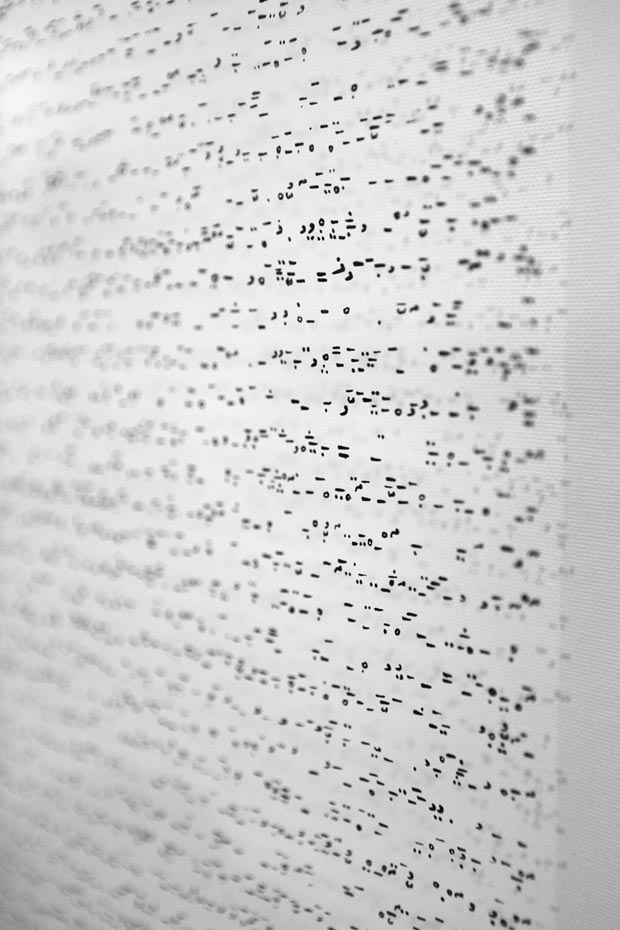 Detail of Shakl, 2012. Black ink, glass, white canvas. 73 x 130. Series of 10 unique pieces / Courtesy of Sabrina Amrani Art Gallery
Detail of Shakl, 2012. Black ink, glass, white canvas. 73 x 130. Series of 10 unique pieces / Courtesy of Sabrina Amrani Art Gallery
The video installation 'Heaven or Hell' is inspired by the experimental film 'Anemic Cinema' that Marcel Duchamp made in 1926. It is an ornamental abstraction whose rotation alternates rotatory discs and extracted words from the Qur'an, written in spiral. This universe created of forms that decompose and come away from the center, and the words separated from their context, stripped of their true meaning, appear in a soundscape that evokes the sound of army footsteps running or the applause of a crowd. Is the metaphor or image of an "Arab Spring", that oscillates from the bright colors of the roots and the saturated sounds of the horizons. The video shows the anxieties and concerns buried in the collective unconscious versus an ongoing cultural loss and a present that dislocates.
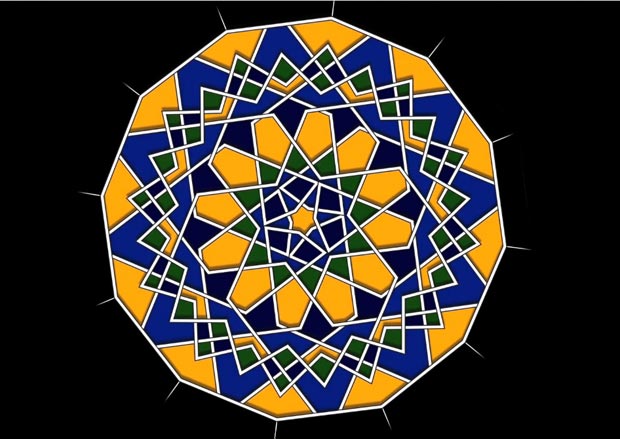 Video still of Heaven or Hell, 2011. Video installation. 4:28 min. Variable dimensions. Ed. 1/3 / Courtesy of Sabrina Amrani Art Gallery
Video still of Heaven or Hell, 2011. Video installation. 4:28 min. Variable dimensions. Ed. 1/3 / Courtesy of Sabrina Amrani Art Gallery
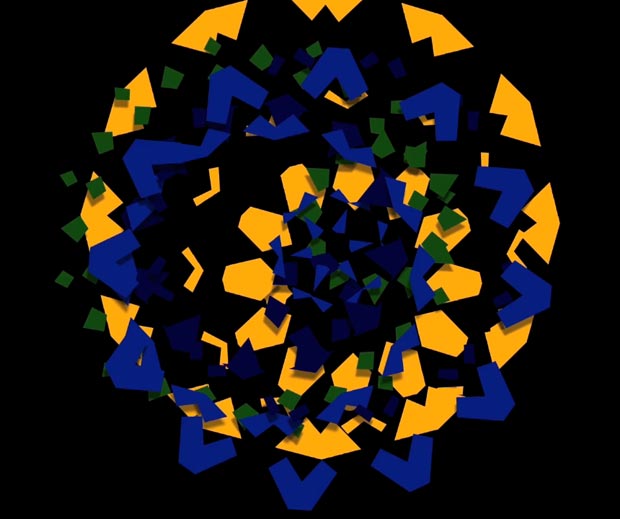 Video still of Heaven or Hell, 2011. Video installation. 4:28 min. Variable dimensions. Ed. 1/3 / Courtesy of Sabrina Amrani Art Gallery
Video still of Heaven or Hell, 2011. Video installation. 4:28 min. Variable dimensions. Ed. 1/3 / Courtesy of Sabrina Amrani Art Gallery
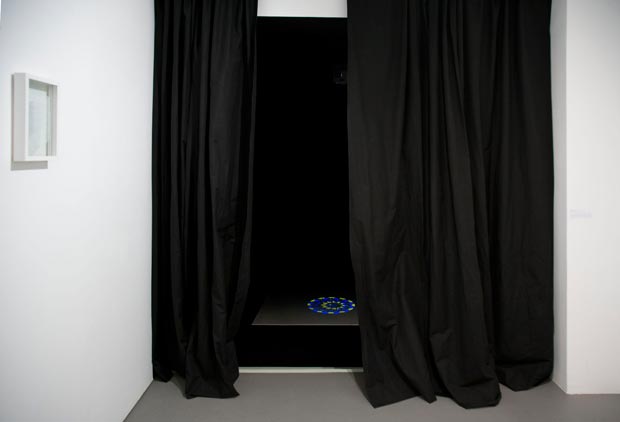 Installation view of Heaven or Hell, 2011 at Sabrina Amrani Art Gallery / Courtesy of Sabrina Amrani Art Gallery
Installation view of Heaven or Hell, 2011 at Sabrina Amrani Art Gallery / Courtesy of Sabrina Amrani Art Gallery
The show continues with the piece ‘Schize’, a video that further penetrates the theme of the exhibition. The political, religious and social censorships generate a kind of inscision and disjunction in the body as well as in the soul. The oppression and the deprivation of the body's liberty (by covering it) and of the soul (by preventing its expression), are acts of domination and control. In the video ‘Schize’, legs, hands and hair.... are covered and exhibited behind a white screen hiding the rest of the body. In this Video, the artist tries to track down, by the outburst of the body movement facing censorship, the power and the invisible force of the fragile beings.
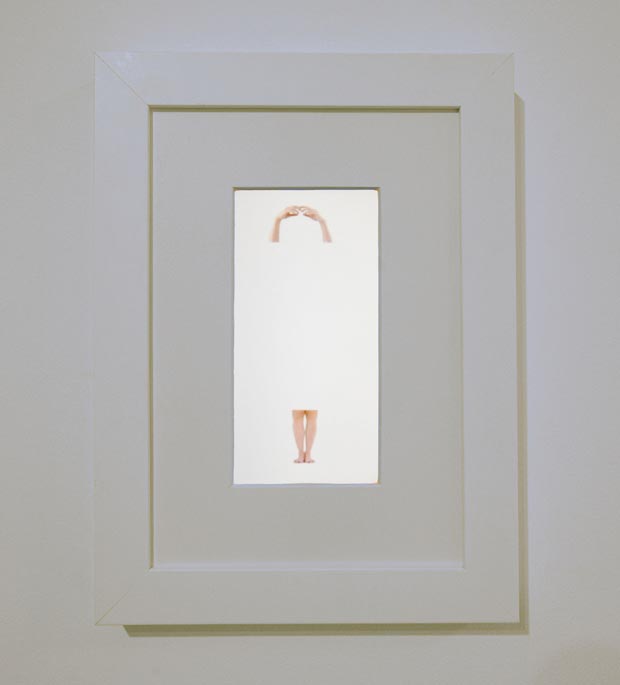 Installation view of Schize, 2010. Video installation. 6:19 min. Variable dimensions. Ed. 1/3 / Courtesy of Sabrina Amrani Art Gallery
Installation view of Schize, 2010. Video installation. 6:19 min. Variable dimensions. Ed. 1/3 / Courtesy of Sabrina Amrani Art Gallery
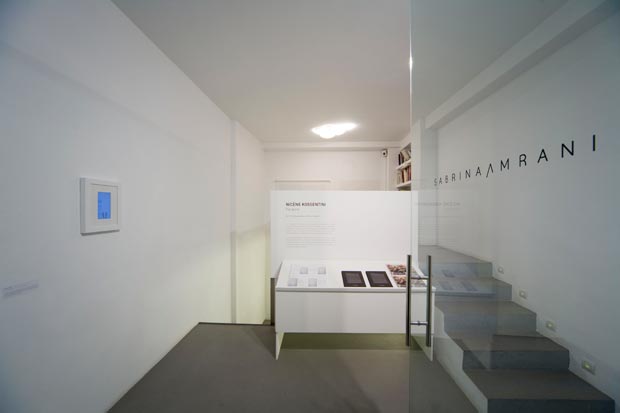 Sabrina Amrani Art Gallery's entrance, with show 'Paraître' by Nicène Kossentini. Schize, 2010 on the left hand side. / Courtesy of Sabrina Amrani Art Gallery
Sabrina Amrani Art Gallery's entrance, with show 'Paraître' by Nicène Kossentini. Schize, 2010 on the left hand side. / Courtesy of Sabrina Amrani Art Gallery
Other pieces presented in ‘Paraître’ are the photographic series ‘They abused her by saying...’ that evoke the fragility of human beings, the transience of things and the sweet melancholy of passing time and 'Rasaîl', a series of pieces inspired also by ancient Islamic texts.
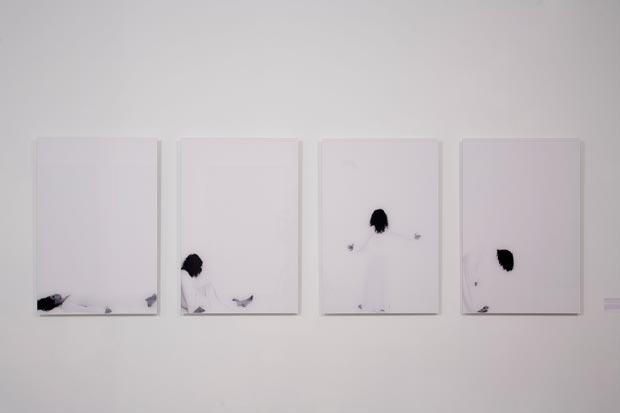 They abused her by saying…, 2010. Photography. Fine Art Print on Diasec. 50 x 75 cm. Series of 12. Ed 2/5. / Courtesy of Sabrina Amrani Art Gallery
They abused her by saying…, 2010. Photography. Fine Art Print on Diasec. 50 x 75 cm. Series of 12. Ed 2/5. / Courtesy of Sabrina Amrani Art Gallery
 Rasaîl, 2012. White ink on glass. 20 x 31 cm. Series of 14 unique pieces / Courtesy of Sabrina Amrani Art Gallery
Rasaîl, 2012. White ink on glass. 20 x 31 cm. Series of 14 unique pieces / Courtesy of Sabrina Amrani Art Gallery
 Rasaîl, 2012. White ink on glass. 20 x 31 cm. Series of 14 unique pieces / Courtesy of Sabrina Amrani Art Gallery
Rasaîl, 2012. White ink on glass. 20 x 31 cm. Series of 14 unique pieces / Courtesy of Sabrina Amrani Art Gallery
 Detail of Rasaîl, 2012. White ink on glass. 20 x 31 cm. Series of 14 unique pieces / Courtesy of Sabrina Amrani Art Gallery
Detail of Rasaîl, 2012. White ink on glass. 20 x 31 cm. Series of 14 unique pieces / Courtesy of Sabrina Amrani Art Gallery
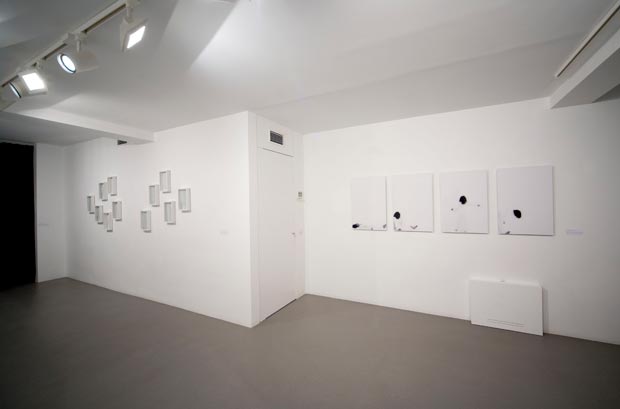 Sabrina Amrani Art Gallery view with Rasaîl, 2012 and They abused her by saying…, 2010 on the right hand side / Courtesy of Sabrina Amrani Art Gallery
Sabrina Amrani Art Gallery view with Rasaîl, 2012 and They abused her by saying…, 2010 on the right hand side / Courtesy of Sabrina Amrani Art Gallery
Comments
Add a comment